by Eric Meier
Perhaps you’ve seen a type of lumber for sale known as “soft maple,” and were wondering: what’s the difference between between this Soft Maple and Hard Maple? Just how soft is it? Why does it cost about half as much as Hard Maple? How can I tell the two apart?
Well, here are the answers:
Hard vs. Soft: What’s the difference?
The term “soft maple” does not refer to any specific species of maple, but rather, it’s a broad term which includes several different species of maple. The term “soft maple” is merely used to differentiate these species from hard maple.
Hard Maple, on the other hand, typically refers to one specific type of maple species: Acer saccharum. Hard maple is also known as rock maple or sugar maple, (this is the same tree which is tapped to get maple syrup). Besides this one species of maple, the only other species that are sometimes considered in the grouping of hard maple in the United States are black maple (Acer nigrum) and Florida maple (Acer floridanum). But these species are far less commonly seen commercially, and they are both so closely related to hard maple that some even consider them to be sub-species of the same tree, classifying them as Acer saccharum subsp. nigrum. and Acer saccharum subsp. floridanum, respectively.
Depending on where you live, different species might be sold as soft maple. For instance, if you live in Oregon, the soft maple that you buy (if it has been harvested locally) will likely be bigleaf maple, while those living in the eastern United States may actually be buying red maple or silver maple. (And just as citizens of both the east coast and the west coast each like to assert the superiority of their own respective region, there is almost a rivalry between bigfleaf maple advocates on the west coast, and red maple fans on the east coast.)
Some of the most common species of maple that fall under the grouping of soft maple are:
- Bigleaf maple (Acer macrophyllum)
- Box elder (Acer negundo)
- Red maple (Acer rubrum)
- Silver maple (Acer saccharinum)
- Striped maple (Acer pensylvanicum)
Each of these maples have their own characteristics regarding strength, hardness, weight, etc. But overall, they are not as hard nor as strong as hard maple; though for a more exact comparison, continue to the data found in the next section.
Hardness of maples compared
It should be obvious that hard maple is harder than soft maple, but you may be wondering how much of a difference there is between the two. Will soft maple simply collapse like a polystyrene cup as its “soft” name implies?
The good news is that for many purposes, soft maple will be hard enough to be used in place of hard maple. Even though it is referred to as soft maple, it is only soft in relation to hard maple.
A common measurement of wood hardness is the janka hardness test. The test measures the amount of force required to embed a .444″ diameter steel ball halfway into the wood. The results for each of the maple species are shown in the chart below.
Now it may look like hard maple is heads and tails above the rest (and to a certain extent, it is), but for reference, black cherry has a janka hardness of 950 lbf (the same as red maple), and black walnut is rated at 1,010 lbf. Also note that black maple (not pictured), isn’t quite as hard as its close relative, hard maple, and ranks in the mid-range, with a hardness of 1,180 lbf.
Taking the hardness data within context of other hardwoods, soft maple may be used as a valid substitute for hard maple in most situations where a hardwood of moderate density is called for. In addition, soft maple is slightly easier to work with, and won’t dull cutting edges as quickly, or burn as readily when being shaped as hard maple.
The main instances where you would want to stick with hard maple would be in applications where hardness and strength are important, such as: butcher blocks, flooring, workbench tops, etc. Hard maple (1,450 lbf janka) is roughly twice as hard as soft maple (700-950 lbf janka)—primarily because it tends to grow about half as fast as most other soft maple species. (And to a great extent, this also accounts for the difference in cost between the two types of maples as well.)
Telling the two types of maple apart
Unlike the task of telling red and white oak apart, sorting between hard and soft maple isn’t quite as clear-cut. Hard maple, based on simple outward appearances, looks very similar to soft maple, and in general is tough to tell apart in finished pieces. When attempting to sort out different maple species, it’s important to keep in mind the limitations and obstacles that are present in our task. (Please have a look at The Truth Behind Wood Identification to approach the task in a proper mindset.)
There are four main ways that can help you tell hard maple from soft maple.
1. Weigh the wood
In my opinion, getting an accurate density value is the best way to practically evaluate maple. Janka hardness has been shown to be directly related to density. Even if a board is technically from a “soft” maple species from a biological standpoint, if it happens to be as dense as hard maple, then the point is moot (as it will also be as hard as true hard maple as well). Likewise, if a piece of verified hard maple should happen to be as lightweight as a piece of soft maple, then most of the rationale for using hard maple is irrelevant. (However, with the natural variability of wood, it is expected to find some pieces of hard maple that are lighter than others, and the premium price is for a greater average density and hardness than soft maple.)
A brief sidenote on the “fingernail test”
A very crude test that you can perform on milled boards before they are put into final use is sometimes called the fingernail test. Basically, you find a crisp edge of the wood, and with your fingernail you try to push in as hard as you can and see if you’re able to make a dent in the wood.
With hard maple, virtually no dent should be left with your fingernail, yet soft maple will be more likely to be dented. Yet since everyone’s fingernails and strength is different, this should only be considered a very crude means of testing when other methods/tools are not available. A much better and more accurate way of testing the wood, you can take measurements of the board in question, and then weigh it to get an estimate of its density. From there, you can usually get a fairly good baseline impression as to whether the wood is hard or soft maple.
Whenever you are weighing wood, remember that on average wood density has about a 10% coefficient of variation, which means that a wood could easily be plus or minus 10% of the average weight and still be considered “typical” for the species.
Maple type | Average | Density range(+/- 10%) |
| Hard maple | 44 lbs/ft3 | 39.6 to 48.4 lbs/ft3 |
| Black maple | 40 lbs/ft3 | 36 to 44 lbs/ft3 |
| Bigleaf maple | 34 lbs/ft3 | 30.6 to 37.4 lbs/ft3 |
| Box elder | 32 lbs/ft3 | 28.8 to 35.2 lbs/ft3 |
| Red maple | 38 lbs/ft3 | 34.2 to 41.8 lbs/ft3 |
| Silver maple | 33 lbs/ft3 | 29.7 to 36.3 lbs/ft3 |
| Striped maple | 32 lbs/ft3 | 28.8 to 35.2 lbs/ft3 |
It should be noted that these are the average weights for the given species, and depending on the growing conditions of the tree, these numbers can easily be higher or lower. (For instance, red maple overlaps with both black and hard maple in its density range, so weight alone can’t be used to identify the wood—especially if only one or two small samples are weighed.) Also, the density is given for wood that is at 12% moisture content: having a substantially higher or lower moisture content can alter the wood’s weight accordingly.
If you have a small postage scale, or an accurate digital scale, you may be able to get relatively accurate measurements. (Bathroom scales with only 1/2 pound increments are usually far too crude a measurement to give reliable results.) Generally, the larger the sample to be weighed, the more accurate the results. Simply weigh the wood in question, and then carefully measure all dimensions to find its total volume. Remember, Volume equals Length x Width x Height: (V = L x W x H).
Calculating density
Let’s say we have a piece of maple that is 24 inches long, 8 inches wide, and .75 inches thick. This means that the total volume is 144 cubic inches, since 24 x 8 x .75 = 144.
Next, we’ll assume we’ve weighed the board, and found that it weighs 3 pounds, 8.0 ounces (or 3.5 pounds). So our board’s density is 3.5 pounds per 144 cubic inches. The only problem is that we need to convert our measurements to the units that we are trying to find in the chart above: pounds per cubic foot.
There are 1728 cubic inches in a cubic foot, (12 x 12 x 12), so to find our multiplier, we divide the 1728 cubic inches by the 144 cubic inches of our board, and get a multiplier of 12. (Most measurements won’t come out to a perfectly even number, but I chose a board with easy dimensions to make it a little simpler to calculate.)
So to convert our board from 3.5 pounds per 144 cubic inches to pounds per cubic foot, we simply multiply both sides by the multiplier we found in our previous step: in this case, it’s 12. So multiplying things out, we find that our board is 42 pounds per 1728 cubic inches (or one cubic foot). Taking this calculation (42 pcf), and looking at the table above, it would appear that in all likelihood, this board is indeed Hard Maple.
2. Look at the endgrain
It can be tough to discern the differences between the maples, and there are a number of subtle differences that may not be reliable enough on their own to distinguish the two types, but they still serve as indicators that can help point toward an identification:
- Hard maple tends to be of a lighter, more uniform color, while soft maple tends to be a bit darker, with red, brown, or gray streaks. (This is a good rule of thumb, but in reality, all types of maple can have a very broad range of color variation.)
- Since hard maple grows slower than soft maple, the growth rings on hard maple will generally be closer together than those of soft maple. Since a lot depends on growing conditions for each individual tree, this is not a foolproof way of distinguishing the two, but is a good reference point. It’s possible for soft maple to have tighter growth rings, but it’s much less likely for hard maple to have widely spaced growth rings on the endgrain (3/8″ or more).


With a 10x magnifier, look at a clean and sanded (to at least 220 or 300 grit) view of the endgrain. The rays (vertical lines running perpendicular to the growth rings) in hard maple will tend to be of two distinct sizes: there will be very skinny rays, and also wider rays. Soft maple exhibits a much narrower range of ray widths, with most being uniformly thin.
3. Use a chemical test
Perhaps the most difficult species of soft maple to distinguish from hard maple is that of its closest competitor (in terms of hardness)—red maple. Thankfully, a solution of ferrous sulfate (FeSO4) can be used to distinguish between a few types of maples, especially between red maple and hard maple.
Ferrous sulfate, sometimes called iron sulfate, may be obtained locally through chemical supply stores, but it is typically only sold in bulk quantities, making such a small project prohibitively expensive. However, some online retailers like Amazon have the chemical for sale in much smaller quantities.
While some sources recommend a “saturated” solution of ferrous sulfate, this is usually needless—even very small quantities of ferrous sulfate mixed in water are enough to give pronounced reactions. If a completely saturated solution of ferrous sulfate is applied to the wood surface and allowed to dry, a layer of pale crystallized material will be deposited, obscuring the color results on the wood surface beneath. A good intermediate solution of ferrous sulfate is given below.
Recipe for Ferrous Sulfate Solution for Testing Maples
1/2 cup of water
1/2 teaspoon ferrous sulfate
Directions: Stir in ferrous sulfate and allow to stand for several minutes. Solution should take on an amber color.
Once the solution is mixed and ready, simply brush a liberal amount onto the wood surface, and wait for a color to develop. (If only a thin layer is brushed on, or if the wood rapidly absorbs the solution, it’s recommended to reapply a second layer within about a minute of the first application.) A color change can be seen within about 10 minutes, but it’s best to wait about an hour for the full color to develop before attempting to determine the outcome.
Red maple gives a deep, inky blue/black color, while hard maple results in a paler bluish green color. In addition to these two main woods, different species of maple and other lookalikes (such as birch, dogwood, etc.) will give different reactions.
Other hard maples turning pale blue/green:
- Black maple
- Field maple (from Europe)
Other soft maples turning pale blue/green (false positives):
- Silver maple
- Bigleaf maple (ambiguous, slightly darker than Hard Maple)
- Sycamore maple (from Europe)
Non-maples turning pale blue/green:
- Birch (very pale coloration)
Non-maples turning dark blue:
- Flowering dogwood
Maples species that are non-responsive:
- Box elder (neutral, no discoloration)
4. Look at the leaves on a living tree
Under most circumstances, it’s usually possible to determine with a fair degree of certainty whether any given piece of wood is hard or soft maple using all the previous tips; yet it can be nearly impossible to determine the exact species of soft maple just by looking at the wood, or even weighing it.
To achieve such refinement in identification, one of the best things to do is look at the leaves of the maple tree in question. (This option is obviously only available if you still have access to the living tree, and you are contemplating having it milled into lumber.) Below is a chart showing illustrations (and some scans) of maple leaves of various species, along with descriptions of their size and characteristics. While there are literally thousands of species of maple in the world, with numerous hybrids and cultivars, the list below should help to identify the most common ones.
Name/details
Foliage illustration
Leaf photo
Hard maple—The classic shape that is most often associated with a maple leaf. Leaves typically have either 5 or 7 lobes, with vivid autumn coloring ranging from yellow to purplish red.
Black maple—Very similar to hard maple, black maple leaves typically have only 3 lobes, with much shallower notches between them. Leaves of black maple also tend to be thicker than those of hard maple.
Bigleaf maple—Just as its name implies, this species of maple has the largest leaves of any maple, with a leaf size of 6 to 12 inches (15-30 cm) across. Bigleaf maple is common in the Pacific northwest United States.
Box elder—Distinct from other maple leaves, box elder is sometimes called “ash-leaved maple,” since its leaves look closer to ash than maple.
Red maple—Leaves can vary in form, and look similar to either striped maple or hard maple—though with a more jagged edge. Red maple trees have distinctive red flowers, twigs, seeds, and red leaves in the fall.
Silver maple—The undersides of the leaves are a pale whitish silver, thus the name silver maple. Leaves have deep notches between the lobes which help to tell them apart from the shallower notches of hard maple
Striped maple—The leaves of striped maple do not look like the typical form that most associate with a maple leaf. The bark of this tree has green, white, and/or brown vertical stripes along the trunk.


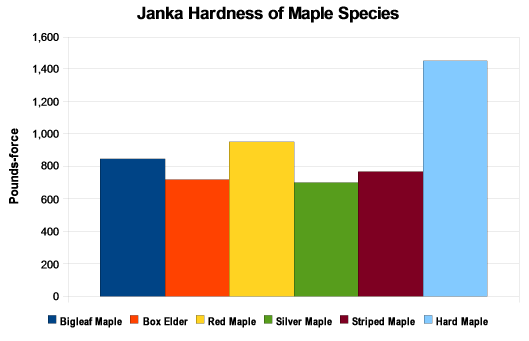
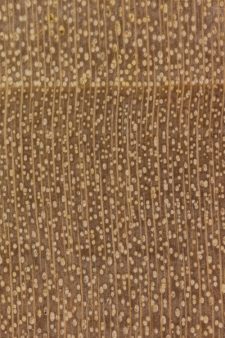
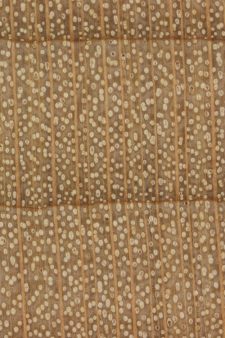
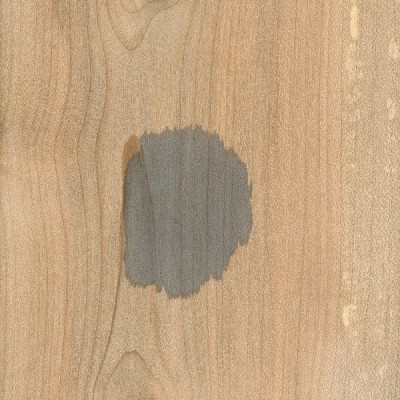
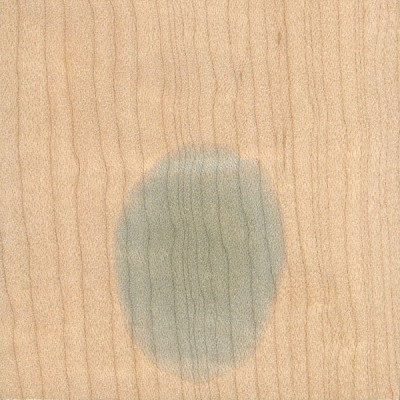
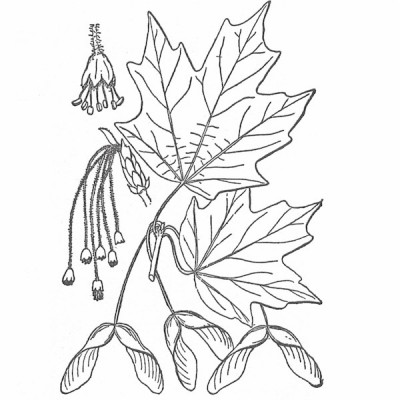
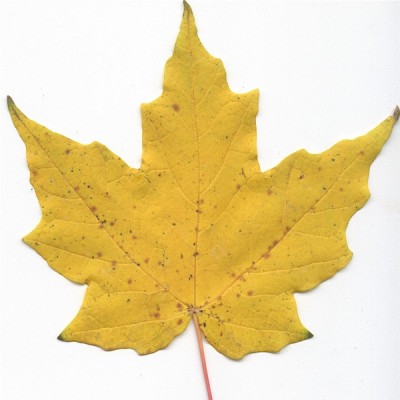
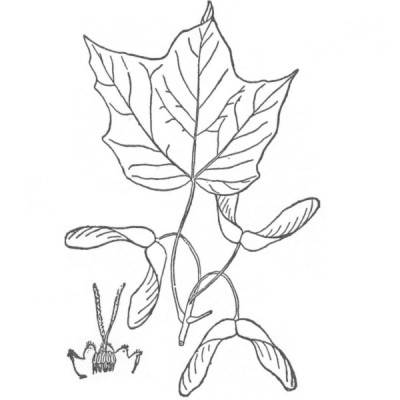
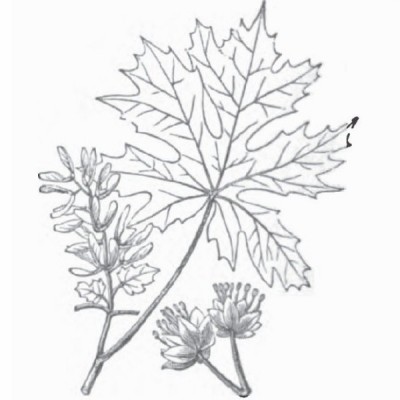
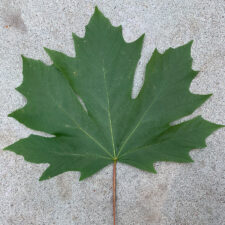
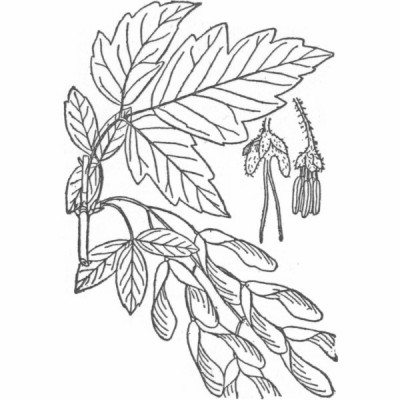
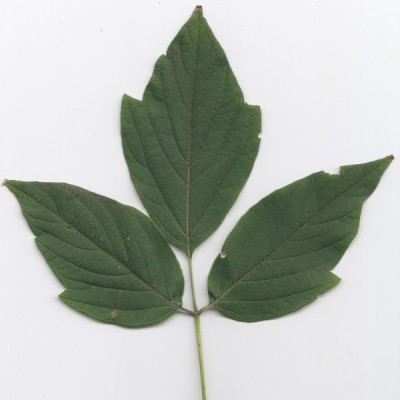
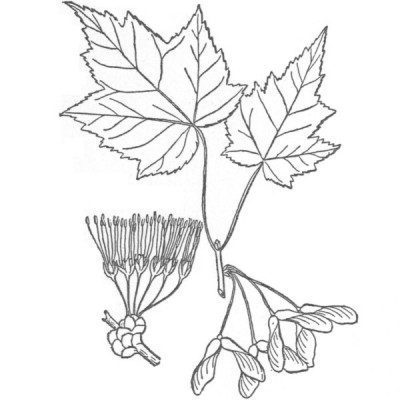
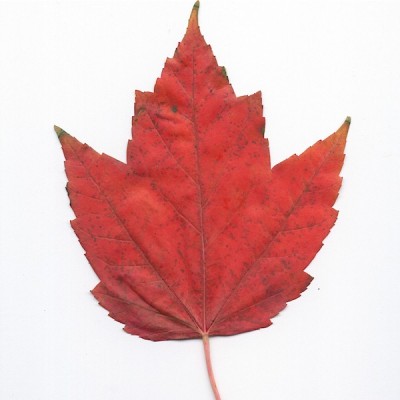
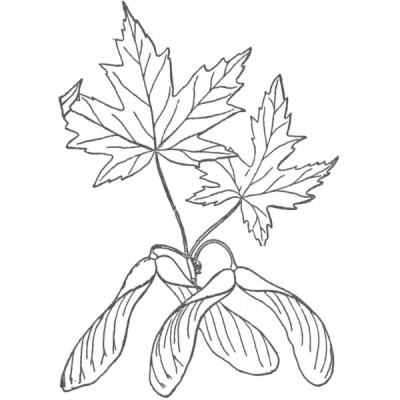
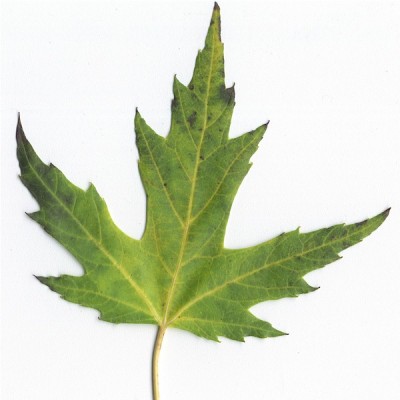
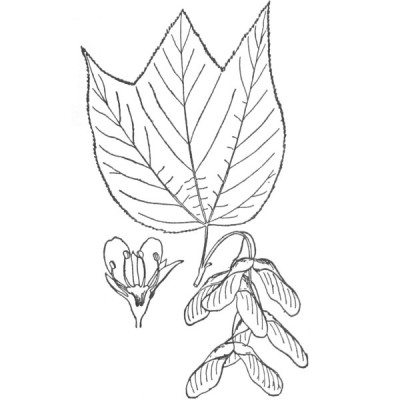



I’ve been testing multiple species. Red, Silver, Bigleaf and Sugar. It definitely seems to be the case that Bigleaf is slightly darker than Sugar when tested. The problem is that I have Silver and Norway in the mix somewhere. I only know the Sugar, Red, and Bigleaf. Can you tell me if you have any experience with what color Norway Maple turns and if Silver Maple gives the same light green or slightly darker green as Bigleaf?
I never tested Norway maple, but I do know that silver maple gives a relatively mild/light result.
I have a bunch of Norway maple that’s air dried for 4-6 years, it’s the palest of the maples I know about tbh. But it’s also soft. Like much softer than soft maple. I’d also say the same about box elder which in my experience is softer than poplar / on par with basswood.
This is all pretty good information. Could you also add that there are other maples you can tap to make maple syrup? We tap our red maples (yes, they are red maples) and make delicious syrup every February. Granted, sugar maples have the highest sugar content, but that doesn’t mean that other species aren’t used for sugaring. It’s a common misconception that only sugar maples are tapped for syrup. When I tell people this, they are always surprised.
Thanks!
Rule of thumb is the softer the maple, the less suitable for syrup.Lots of people tap the reds around here. And boxelders–I forget offhand, but there’s a time when the sap goes bad for syruping–so you get a shorter useable season out of them than other maples.
We tap our silver maple in Iowa and get really good results. over 3% sugar in the sap and good flavor syrup. Yes the sap goes bitter quickly when the buds come out, but we get a month of good production first. Typically over a gallon of 68.5% syrup per large silver maple tree.
Great article, awesome details.
Could you write one on identifying Birch, both sub-types VS other woods?
I bought some but not sure I got the right wood, could be much cheaper substitute.
Thank you
Hi Eric-
We brought home a sample box of prefinì shed solid hardwood flooring from Floor and Decor labeled as Camden maple. The hardness rating online says 1 with a janka of 700. Does this make sense for hardwood flooring?
Seems rather soft and may be a typo. Also, keep in mind that “Camden” maple is just a made up name and not a real wood species, so who knows what you would actually be getting.
We have red maples in our yard. They are red in SPRING (when they first break bud), and turn a brownish purple in fall.
The is a commonly sold “Crimson King” cultivar of Norway Maple, (a native of Eurasia, and can be an invader in the U.S.) The dark wine-red leaves make it a striking tree, but the leaf shape is of course that of Norway Maple. Could that be what you have?
I thoght they might be, but my mom pointed out that they don’t do the “crimson” the variety is known for, and the leaf shape is closer to the hard/sugar maples. They’re possibly THE most common maple in my area. “Striking” is not a word I would use to describe them. As I said, they bud out a strong red, but quickly shift to a deep, purplish-green. In “high color” years, they might go a dirty orange in fall, but in most years, they just go purple, then brown. I understand they get the “red” name because their VANES have… Read more »
Interesting. (And didn’t expect an answer after all this time, lol.) So are you wondering if it’s a cultivar or just a plain ‘ol red maple? (No an expert here, just know a few things from early work life in horticulure.)
Hello.
What kind of wood is this lovely table made from?
I like your web site.
Very tough to say, as that very much appears to be a stained wood, and not its natural wood color.
It’s maple. I run a business making/repairing/and refinishing furniture. It isn’t a “stain” but a tinted lacquer or glaze. I see a lot of maple pieces and it is good solid furniture. It strips easily and repairs well.
For anyone interested in maple syrup, Cornell has a nice guide for beginners. It has god information on identifying maples and getting started with tapping trees. All maples can be tapped. There are some differences in flavor and sugar content between the various maples.
The Maple Syrup Production Beginner’s Notebook is available here: https://cpb-us-e1.wpmucdn.com/blogs.cornell.edu/dist/7/5773/files/2019/08/Beginner-Notebook-1st-Edition-1.pdf
https://blogs.cornell.edu/cornellmaple/
Update to my previoius comment. After 4 years, the first link is dead. The second one will still get you to the notebook. There is a much better book available that covers everything about maple syrup from growing trees to building the sugar house.
North American Maple Syrup Producers Manual, 3rd Ed.430 pages free download.
https://mapleresearch.org/pub/manual/
I am from Guyana,South America. I would like to know what tropical wood is closely comparable to the maple with the flame patterns as is used in guitar building. Also what tropical equivalent is to Honduran Mahogany, Rosewood and Ebony?Thanks in advance.
I live in Hawaii and I find Mango to be comparable in color and workability(as maple). It has a slightly different figure than but is very consistent throughout and can be worked weeks after milling. Very economical lumber and abundant.
High end drums are made out of Canadian Rock maple veneer plies. Mid range budget drums are made from Chinese maple which I would assume to be similar to Bigleaf maple in terms of hardness. I wonder once the wood is cut into thin veneers and saturated with glue and pressed in molds into round plywood if the type of maple really matters with regard to the durability of the instrument. I have noticed no tonal difference.
I was told my natural floor is Canadian maple,it’s hard but what type of oil is best to feed and treat as it’s not varnished etc I love the flooring and want to keep as long as possible. It was imported by the previous owners but they were told they couldn’t get any more imported. I have no idea what type of tree etc,just want to feed and treat my beautiful floor thanks
Do you have any pictures of this floor? I would be very surprised to see that a floor has no varnish or other finish applied to it, especially something like maple.
What species of wood is this box? Thanks
That looks like sheesham, aka Indian rosewood. We’ve seen a lot of it in furniture the last few years. It can vary widely depending on how it’s stained, etc. but without stain it is generally blonde and warm brown. The blond takes stain readily while the brown is more resistant so you often see pieces that are brown and grey. The brown darkens slightly with the grey stain while the blonde portion looks truly grey.
Here’s a good example of sheesham without stain.
is the picture still available as i am not able to see it on this forum?
Here’s an example with grey stain.
I have 2 different leaves! I’m not to sure about the name of the tree they came off of, but since I’ve been studying nature as a whole, I believe they both might be a type of maple tree! The one leaf changing color from Green to yellow! Very pretty! The other one has three wide lobes! It’s just beginning to change color to a very light yellow! Could you please send me a message if I might be correct in identifying them! Thank you!
A picture is worth a thousand words… =)
I got 2 different colors from 2 suppliers with PC maple (Acer Macrophyllum) and get confused how these can be! Could you please give me some ideas? Thank you
More than likely, the darker pieces are heartwood, while most maple lumber is the lighter colored sapwood.
“The only one that seems to be specifically associated with a species is birdseye…” Quilted maple is a type of figure that some say only appears in Bigleaf Maple (Acer macrophyllum); it depends on your idea of quilted figure. The highest grade of qulited figure in maple, with a dense display of blisters that seem three-dimensional, are found only in Bigleaf maple, but any maple can have less prominent areas of figure that some call quilt.
Is soft maple a good choice for hand carving kitchen utensils?
I did not see any mention of sugar content in the different maples listed. I drink maple water from soft maples (1.2 to 1.7 sugar). Hard orb sugar maples have (2.5 to 3.0) sugar which is too sweat to drink.
I am laminating hard maple between two sticks of cherry and getting movement after allowing proper dry time 24hrs or more. I have done this with soft maple and didn’t seem to have the same problem.
So my question is does hard maple tend to move more than soft maple(red leaf).
The only maple with Birdseye is a hard maple ? Or others varieties too ? Thanks
Hello, is there something as European/US distinction of maple? And which kinds would be used for flooring? Thanks a lot :)
I bought a sample of this to experiment with bass marimba bars on the online advice of Chris Banta’s online comments: https://www.ccbanta.com/bass-tone-bars/ So far it seems like good tonal quality, especially for bass range because of the hardness, as I understand. It was horribly difficult to saw with my cheesy little jigsaw, producing lots of smoke and cutting very slowly and vibrating terribly on curves. On the table saw, it left lots of shaggy shreddy hairs at the edges. That shreddy quality is something I saw in another unidentified wood sample that I’m trying to identify. It looks like mahogany… Read more »
Where is sugar Maple
Sugar maple = hard maple; they are the same species. Typically, when referring to the tree, it’s called sugar maple, while the wood is referred to as hard maple or “rock” maple.
Thanks I kind of thought this was the case.
Can figured maple (quilted, curly, birdseye) be either hard or soft?
Thank you for the information and the photographs! Shelby County, TN will use this as we study for 4-H State Forestry Judging Competition in October – 3 of our 52 Species are Maples: Sugar, Red, and Silver.
I’ll show our kids this clue too:
“U” shaped sinus (sUgar) is a HARD maple.
“V” shaped sinus (red & silVer maple) is a SOFT maple;
I’ll let y’all know how we do after Oct. 18, 2015!
explain the different terms of maple; curly, Birdseye , spalted, ambrosia. Are these characteristics of maple, or are there different species of maple? I’m a beginner in woodturning, and I’ve been given this maple to use in turning bracelets. Some of it seems to be harder, or “more stable”, and I’m thinking all of it is from the same tree. What I refer to as the curly maple seems harder than the spalted. I’m confused,
You are correct: those terms describe the grain, and not a distinct species. You could have curly maple that’s hard maple, or curly maple that’s soft maple. The only one that seems to be specifically associated with a species is birdseye: that grain pattern tends to occur almost exclusively on hard maple trees.
Hey I’m curious about bigleaf maples; I make pipes and walking sticks and i’m wanting to know if it will be 1. Good looking 2. Strong enough to work with and last. If someone could please get back to me that would be very kind and helpful.
Nice Article. As mentioned earlier, some violin makers use sycamore maple(soft). See below link for reference.
https://www.geigenbauonline.com/violinmaking-The-Making-of-a-Violin.html
Another video I liked (showing the wood): https://www.youtube.com/watch?feature=player_embedded&v=0fUixINRBZY#at=116
But studies on Stradivari family of violins suggest that the wood used was much denser due to the cold weather at that time.
As a violin maker I would like to point out that sycamore maple is a very hard maple in Europe that is not to be confused with American Sycamores which are plane trees, not maples.
And the preferred harvesting location was on a north-facing slope; in fact, one of the ways our middle-school orchestra teacher told us to gauge the quality of a violin was by measuring the grain. (>1/8 in=student, 1/8-1/16=intermediate, <1/16=pro)
I am in Buffalo NY and looked out my front window at the trees the city planted between the sidewalk and curb about 30-40 years ago replacing huge elms and the photo of the ‘Big Leaf’ leaf looks identical to the tree in front of my house. There is a baseball field across the street and the front of my house is on the south side of the street… across the field on the next street most houses got Red Maples. I don’t know if they actually put any thought into their tree planting method, i.e. green gets the shade,… Read more »
Toronto often planted Norway Maples along streets up to about 50 years ago, I suspect Buffalo did the same. They do very well in urban environments and are now considered invasive. They get those black fungus circles in the fall. Their leaves are larger than Sugar Maple leaves and look tike the typical maple leaf. When we lived in Toronto both our neighbours had Norway Maples on the city owned part of their front yard. Here in London Ontario we mostly have Silver Maples and Red Maples, these do not get the black spots. We have a Sugar Maple in… Read more »
Dave,
That leaf was collected when I was out in Seattle. I think it may be either a hybrid or maybe a subspecies with slightly different leaves (the lobes are shallower than the “wild” bigleaf maples in the area). But, true to its name, I remember that the leaves themselves were all gigantic, though it’s hard to express since I didn’t include a scale or ruler next to the leaves.
That scanned photo of a bigleaf maple leaf looks frighteningly like a Norway maple leaf… The drawing is about right though.
I have been harvesting curly red maple for violins here in north carolina and have found wood density to vary in each tree. It seems most builders want wood that has less density for better workability and acoustical performance. After testing speed of sound and radiation ratio. The less dense red maple has better numbers.
How dumb of me. I got it backwards. If if is a “V” shaped sinus (like red & silver maple), it is a SOFT maple; a “U” shaped sinus (like Sugar, Florida maple), is a HARD maple. My apologies for letting my fingers out-quick my brain on the above post!
Generally, one good way to tell hard maples from soft maples is to look at the sinuses between the leaf lobes. If the sinus comes to a sharp “V” the tree is a hard maple. If the sinus comes to a rounded “U” shape, it is a hard maple. Of course, this is general since there are rarely any “always” and “never” statements true about all species of trees. As Mr. Mark Twain said, “There are no good generalities, including this one.”
Eric,
One thing you might consider adding is that turners tend to not like soft maple quite as much because if requires SUCH sharp tool edges otherwise it can fuzz up something terrible. Sanding is also a bit more of a problem w/ soft maple for the same reason. Further, if you use it in segmented bowls next to darkers woods, there’s a tendancy for the dust from the darker woods to lodge in the pores of the maple.
Personally, I avoid soft maple, except for flamed box elder.
By the way, nice site.
Paul
You can also tell the difference via wood rays. Hard maple has one size of ray while soft maple has two. A 10X hand lense helps to see this in the end grain. Normally a good clean cut with a sharp knife/razor helps this process. The woods are very similar but try to run a piece of soft maple through a joiner set for hard maple and the fuzz will tell the tale.
Bob, I’ve heard the same thing about the Norway Maple on old violins. The trouble is—for whatever reason—I can’t seem to find any reliable information on the wood! I don’t know what it is about European woods, but good data is very hard to come by.
My best guess from general reports that I’ve read is that Norway Maple lies somewhere in between Red Maple and Hard Maple. But for what it’s worth, I know that Sycamore Maple has also been used in Europe for the construction of fine violins as well.
i make musical insturments&find very little difference in well seasoned red maple and sugar maple. does anyone know if norway maple is a strong wood? i have been told that the great strad violins were made from the norway maples. thanks bob ginn
From my experience cutting these invasive trees down and removing their roots while still saplings the Norway Maple is on the hard side of Soft Maple. They also grow very fast.
Wikipedia (https://en.wikipedia.org/wiki/Acer_platanoides#:~:text=The%20wood%20is%20hard%2C%20yellowish,in%20regard%20to%20decay%20resistance) says the Janka hardness is 1010 lbf.